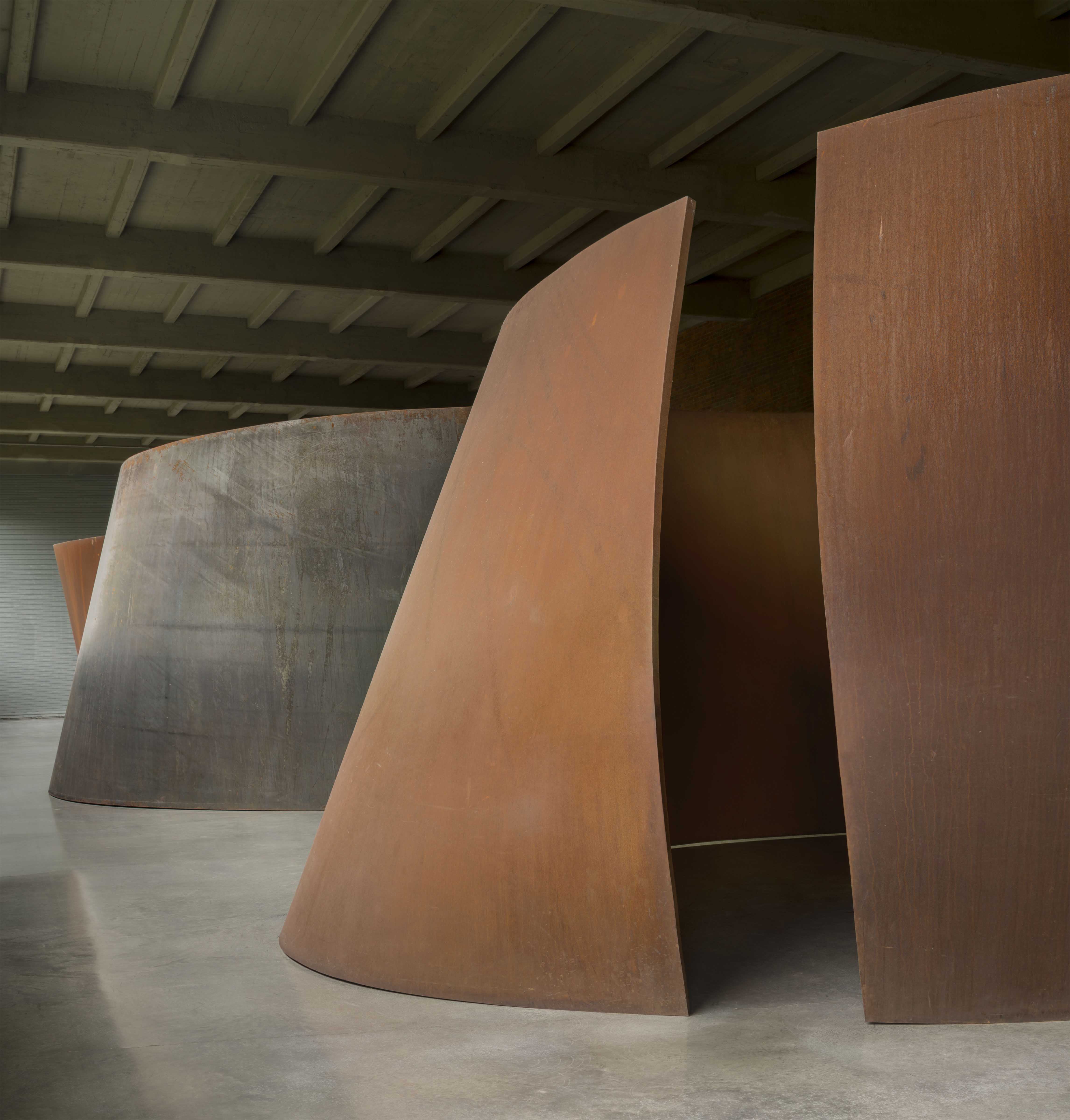



Moving out of the gallery space Serra began creating monumental sculptures in the form of long, curving, horizontal or tall, and seemingly precarious (but partially buried) continuous steel sheets. Serra's 'Prop' pieces in the late 1960s, in which rolls of lead and sheets of other metals were arranged in configurations held together only by gravity, were precursors to the increasingly large-scale public work that developed when in the 1970s he turned his attention outdoors. Richard Serra's iconic monumental Minimalist constructions, typically comprised of self-supporting, shaped and angled corten steel plates, challenge sculptural conventions of scale, material, and subject matter, as well as viewers' perceptions of gravity, bodily alignment, and planar space. Serra's performance of this work during his exhibition at the Leo Castelli Warehouse in 1969 marked his official debut in the New York art scene. For this, the artist hurled molten lead at the points in gallery spaces where the walls met the floors, which cooled to create new forms.
#Rochard serra series#
The earliest works using the industrial metals Serra is known for came in the form of the process-based series 'Splash' (1968–1970). Richard Serra's first sculptures from the mid-1960s were made of rubber, fibreglass, and other non-traditional materials. This-and two consecutive trips to Europe in 19-influenced the Minimalist nature of his work. Studying for a BFA and MFA at Yale from 1961 to 1964, he came under the influence of Philip Guston, Josef Albers, and Morton Feldman, and interacted with other ground-breaking artists such as Robert Rauschenberg, Ad Reinhardt, and Frank Stella. Working towards a BA in English literature at the University of California, Santa Barbara, Richard Serra developed an early interest in industrial materials while working in steel mills.


 0 kommentar(er)
0 kommentar(er)
